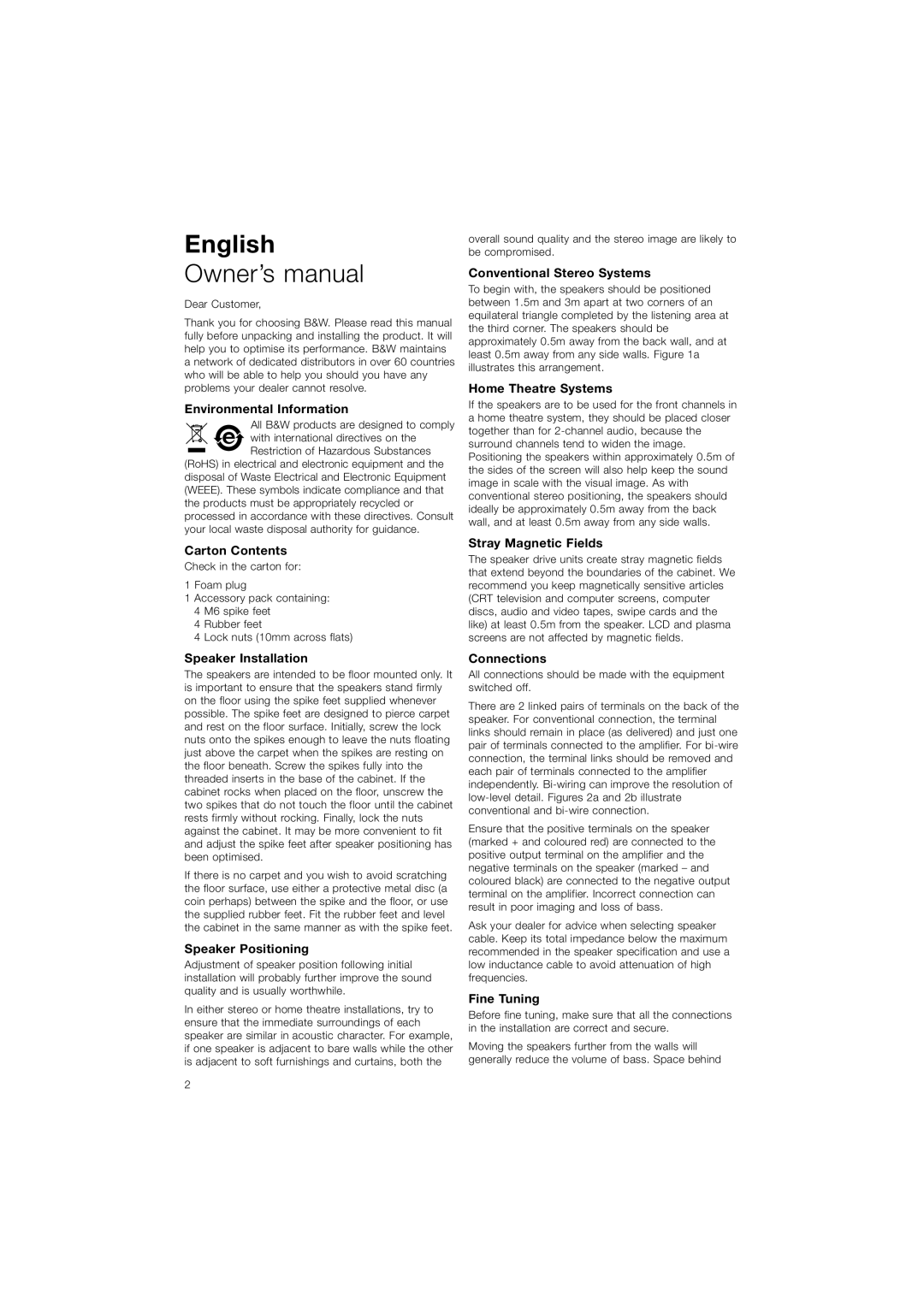CM9 specifications
The Bowers & Wilkins CM9 stands as a hallmark of high-fidelity audio craftsmanship, delivering an impressive blend of technology, design, and performance. Differentiated by its three-way configuration, the CM9 is designed to provide an exceptional listening experience, making it a popular choice among audiophiles and casual listeners alike.One of the standout features of the CM9 is its proprietary drive unit technology. It boasts a 6.5-inch Continuum cone bass driver that is known for its rigidity and lightweight characteristics. This design minimizes distortion while maintaining an exceptional response in low frequencies, allowing for deep, punchy bass without overwhelming the mids and highs. Additionally, the CM9 includes a 5-inch Continuum cone midrange driver. This driver is crafted to provide a natural and accurate reproduction of vocals and instrumentals, making it suitable for a range of musical genres.
High frequencies are handled by a 1-inch aluminum dome tweeter, which utilizes Bowers & Wilkins’ patented Decoupled Double Dome technology. This innovation allows for a more extended and refined treble response, providing an effortlessly smooth listening experience. The tweeter is mounted above the midrange driver to create an effective time alignment, contributing to a more coherent soundstage.
The CM9’s construction further enhances its acoustics. The cabinet features a solid, braced design that minimizes cabinet resonance, allowing the speakers to produce a cleaner, more precise sound. The front-firing bass port also ensures flexibility in placement, making it easier to integrate the speakers into various room settings.
With a frequency response range extending from 30 Hz to 33 kHz, the CM9 excels in marrying deep bass punch with crystal-clear highs. This expansive range underscores the speaker's ability to handle a broad spectrum of sound, from the subtlest nuances of a classical piece to the vigorous demands of rock or electronic music.
Design-wise, the CM9 exudes elegance and sophistication, with a choice of finishes that integrate seamlessly into modern home decor. The speakers are available in various vinyl and real wood veneer options, ensuring they not only perform well but also look stunning in any environment.
In summary, the Bowers & Wilkins CM9 is distinguished by its advanced drive unit technologies, solid cabinet construction, and aesthetic appeal. With its capability to deliver extraordinary audio fidelity, the CM9 remains a top-tier option for those who seek true audiophile performance in their listening space. Whether enjoying music or movie soundtracks, these speakers offer an unparalleled auditory experience.

